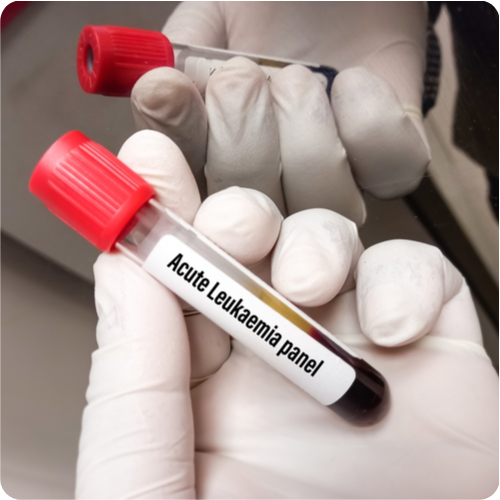09 May 2022

South Australian scientists have made a significant breakthrough in overcoming drug resistance in acute myeloid leukaemia (AML), a rare and devastating blood cancer that kills most patients within a few years.
In a new study published in the world-leading hematology journal Blood, researchers from UniSA and SA Pathology’s Centre for Cancer Biology describe how they have discovered a way to suppress a specific protein that promotes resistance to drugs commonly used to treat AML patients.
Professor Stuart Pitson, one of the lead authors of the study, says the finding could revolutionise the treatment of AML, a disease that recently claimed the lives of SA football great Russell Ebert and professional golfer Jarrod Lyle.
“Each year in Australia, around 900 people are diagnosed with AML, a cancer of the blood and bone marrow characterised by an overproduction of cancerous white blood cells called leukaemic blasts,” Prof Pitson says.
“These cells crowd out normal white blood cells, which then can’t do their usual infection-fighting work, thereby increasing the risk of infections, low oxygen levels and bleeding.”
SA Pathology haematologist Associate Professor David Ross says many AML patients initially respond to Venetoclax, a new therapy for AML recently listed on the PBS, but over time AML cells become resistant to it.
Using a large biobank of patient-donated AML biopsies and world-leading advanced pre-clinical models, the CCB researchers demonstrated that by modulating lipid metabolism in the body, a protein called Mcl-1 is inhibited in AML cells – the protein that facilitates drug resistance.
“This process makes AML cells exquisitely sensitive to Venetoclax, while leaving the normal white blood cells unaffected,” SA Pathology researcher and co-lead author, Associate Professor Jason Powell says.
The CCB team is now working hard to optimise drugs targeting this pathway to take into clinical trials for AML patients.
“For most people with AML, the chances of long-term survival are no better now than they were last century,” Assoc Prof Ross says.
“Now, we have a chance to remedy that. New treatments that prevent Venetoclax resistance have the potential to prolong survival, or even increase the chances of a cure in a disease for which improved outcomes are desperately needed.”
For a full copy of the paper, please email candy.gibson@unisa.edu.au
Notes for editors
Acute myeloid leukaemia (AML) accounts for approximately 0.8 per cent of all cancers diagnosed, at a rate of 3.7 per 100,000 people. It can occur at any age but is more common in adults (and men) over the age of 60.
In most cases the causes remain unknown, but it is thought to result from damage to one of more genes that normally control blood cell development.
Current therapies are effective at putting patients into remission, but relapse is common, with fewer than 30 per cent of AML patients surviving five years post diagnosis.
Contact for interview: Professor Stuart Pitson email stuart.pitson@unisa.edu.au
Associate Professor David Ross email: Health.Media@sa.gov.au
Media contact: Candy Gibson mobile: 0434 605 142 email: candy.gibson@unisa.edu.au




